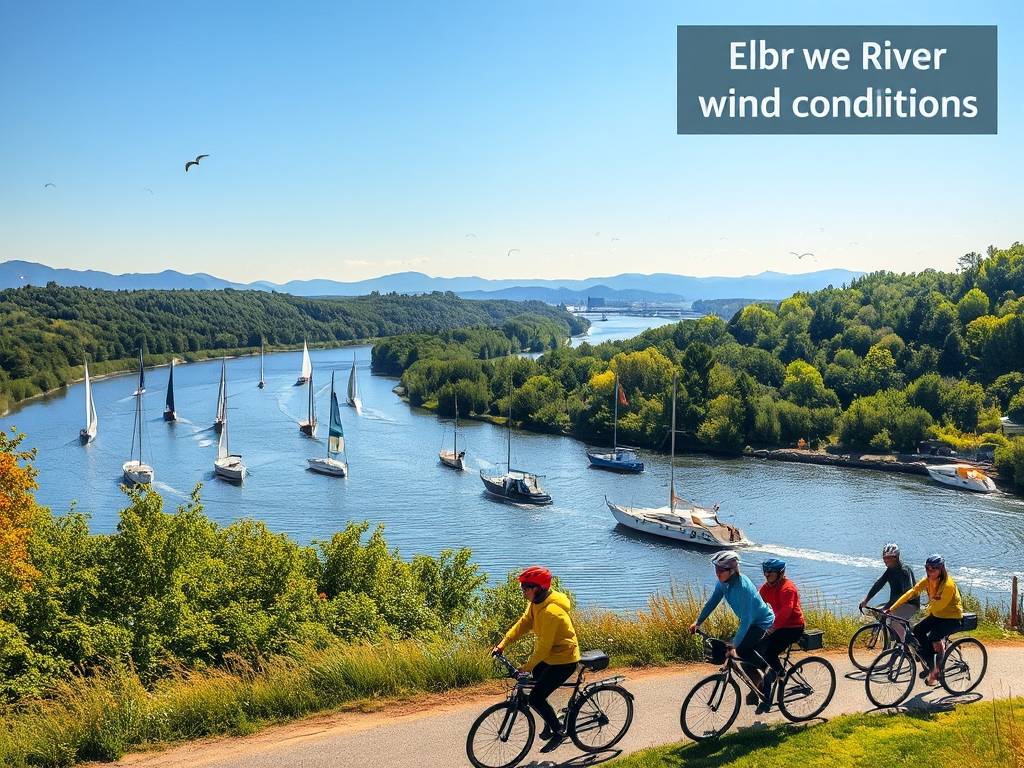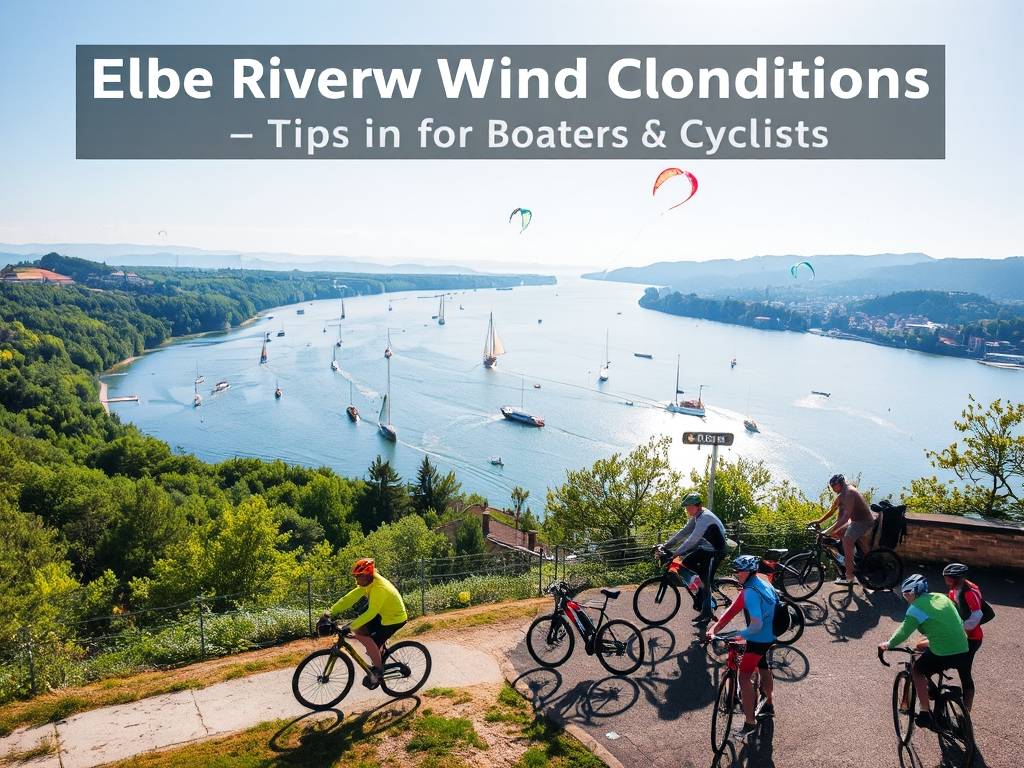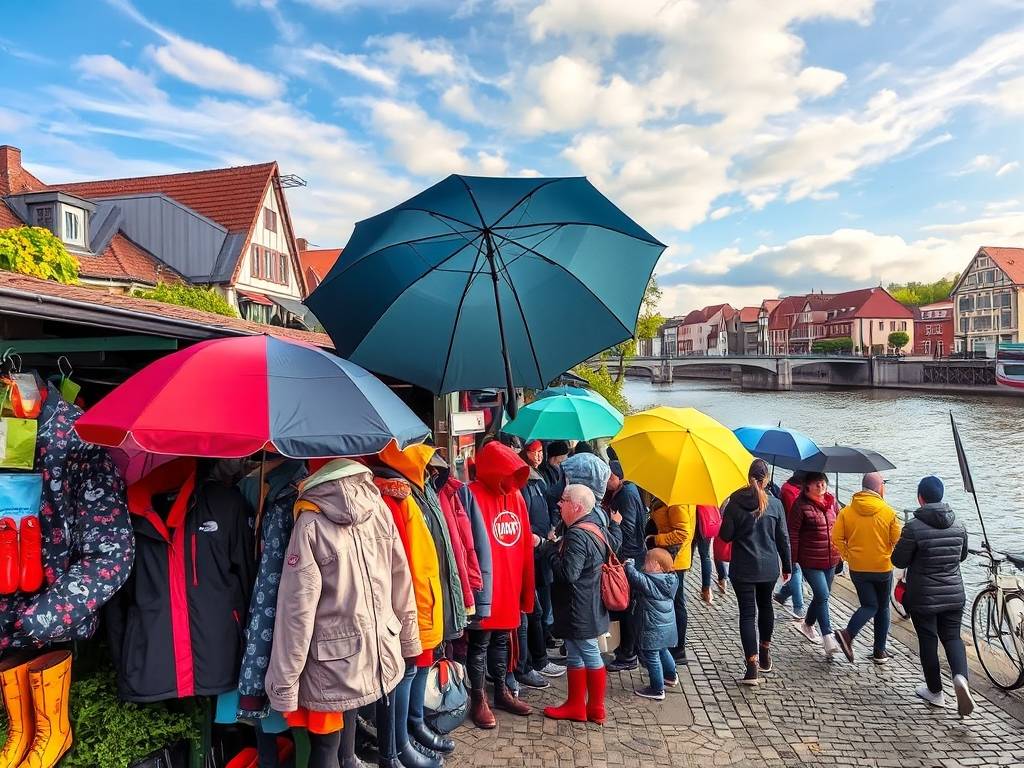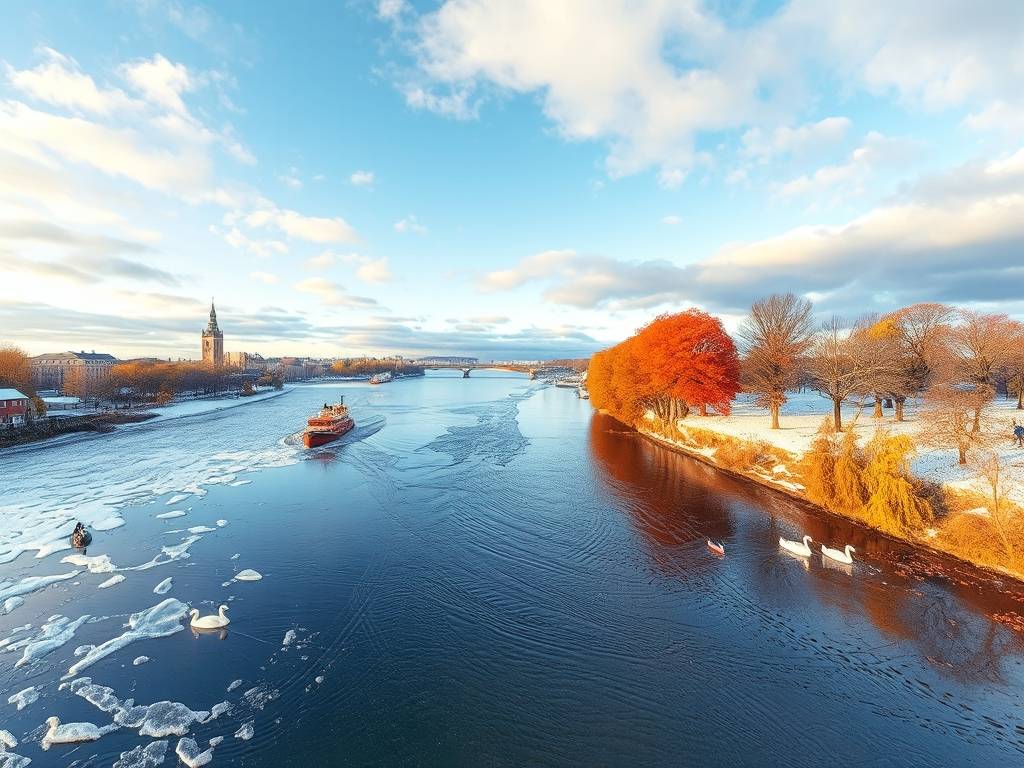Global Travel Information
Elbe River Wind Conditions: Tips for Boaters & Cyclists
Navigating the Breeze: A Comprehensive Guide to Elbe River Wind Conditions for Boaters and Cyclists
The Elbe River, carving its serene path through the heart of Europe, is a magnet for adventurers. From the paddle-wielding boater gliding on its reflective surface to the cyclist pedaling along its scenic banks on the famed Elbe Cycle Path, this river offers an unparalleled experience. Yet, beneath its often tranquil appearance lies a dynamic and powerful force: the wind. Understanding the Elbe River wind patterns is not just a minor detail; it's the cornerstone of a safe, enjoyable, and successful journey. Whether you're planning a sailing trip on the Elbe or a long-distance cycling tour, being prepared for the prevailing wind conditions for Elbe River travel will transform your adventure from a battle against the elements into a harmonious dance with them.
This guide is designed to be your one-stop resource, demystifying the wind for both water and land-based explorers. We'll delve into the causes, the seasonal shifts, and provide actionable tips for safe boating in windy conditions on the Elbe and strategies for cycling the Elbe River path with crosswinds.

Understanding the "Why": The Science Behind the Elbe's Winds
The Elbe River Valley acts as a natural wind tunnel. As the river flows, particularly through its wider, flatter stretches, it creates a low-friction corridor. When larger-scale weather systems push air masses across the region, this corridor channels and accelerates them. This is why you can often experience a consistent, and sometimes surprisingly strong, breeze even when areas just a few kilometers inland are relatively calm. The primary prevailing winds in this part of Central Europe are westerlies, meaning they generally come from the west or northwest. However, local topography—hills, bends in the river, and urban areas—can drastically alter both the direction and strength of the wind you feel at any given moment.
Seasonal Wind Shifts: Knowing What to Expect
Your experience on the Elbe will be heavily influenced by the time of year you visit.
- Spring (March-May): This season is characterized by variability. You can experience gentle, pleasant breezes perfect for a day of leisure boating on the Elbe, but also sudden, stronger gusts associated with passing weather fronts. For cyclists, this is a beautiful time to travel, but packing a wind-resistant layer is essential.
- Summer (June-August): The westerly winds are typically at their most consistent and strongest during the summer months. This is fantastic news for sailors seeking reliable sailing on the Elbe, but it can present a significant challenge for motorboaters dealing with choppy water and for cyclists facing persistent headwinds on the Elbe cycle path. Afternoons often see the wind pick up as the land heats up.
- Autumn (September-November): Wind strengths begin to decrease from their summer peaks, offering a lovely balance. September, in particular, can be ideal, with still-warm temperatures and less forceful winds. However, the potential for stormy periods increases as the season progresses.
- Winter (December-February): Recreational activity is lower, but the winds can be biting and strong, often accompanied by a significant wind-chill factor. This season is generally best left to the most experienced and well-equipped individuals.
Essential Guide for Boaters: Harnessing the Wind Safely
For anyone on the water, from a kayaker to a yacht skipper, wind is a primary navigational consideration. Ignoring Elbe River wind forecasts is not an option.
1. Pre-Departure Planning is Non-Negotiable: Always, without exception, check a detailed marine weather forecast. Look for apps or websites that provide hour-by-hour breakdowns of wind speed and direction. Pay close attention to warnings for strong winds (Sturmwarnung). Understanding the difference between the general forecast and the localized Elbe River wind patterns is key; remember the wind-tunnel effect can make it windier on the river than the broad forecast might suggest.
2. Mastering Wind Direction: The direction of the wind relative to the river's flow will define your day.
- Headwinds (Wind against the current): This creates the shortest, steepest, and most uncomfortable waves. Progress upstream will be slow and fuel-consuming for motor vessels.
- Tailwinds (Wind with the current): This is the boater's best friend. It makes for a smoother ride and helps push you along, saving time and fuel.
- Crosswinds: These can be the most challenging, especially for high-sided boats like houseboats. A strong crosswind can make it difficult to maintain your course and requires constant correction.
3. Key Tactics for Safe Boating in Windy Conditions:
- Trim and Balance: Distribute weight evenly on your boat. Lower any topside canvas (Biminis) to reduce windage.
- Reduced Speed: Slow down in choppy water. This ensures better control and a more comfortable ride.
- Secure Everything: A loose water bottle can become a projectile. Ensure all gear is stowed and hatches are closed.
- Identify Shelter: Know the locations of harbors, marinas, and protected bays along your route. The river bends can often provide a temporary lee.
- Communication: Ensure your VHF radio is operational and that someone onshore knows your float plan.
Cyclist's Companion: Conquering the Headwind and Crosswind
The Elbe Cycle Path is one of the world's great flat rides, but its flatness means there are no hills to block the wind. For a cyclist, wind is the invisible mountain.
1. The Mental Game: Embracing the Challenge The first step is to accept that you will encounter wind. Fighting it mentally only makes it worse. Adjust your expectations; you will cover fewer kilometers on a windy day, and that's perfectly okay. The journey is about the experience, not just the destination.
2. Strategic Trip Planning for Favorable Winds: While the prevailing wind is westerly, the Elbe flows predominantly northwest. This means cyclists traveling from Prague towards Dresden and ultimately Hamburg (the downstream direction) will often enjoy a helpful tailwind or cross-tailwind. This is a crucial piece of planning an Elbe River bike tour. Riding upstream, from Hamburg towards Dresden, means you are far more likely to be battling a persistent headwind. Choosing your direction of travel is one of the most impactful decisions you can make for an enjoyable trip.
3. Practical Tips for Cycling in Windy Conditions:
- Aerodynamics is Your Friend: Wear close-fitting clothing. Use panniers that are sleek and low-profile rather than tall and bulky. When the wind is particularly strong, riding in a lower gear with a higher cadence is more efficient than grinding in a high gear.
- Dealing with Crosswinds: A sudden, strong crosswind gust can be dangerous, especially when it hits you from the side as you pass a gap between buildings or trees. Always keep a firm but relaxed grip on the handlebars, allowing the bike to make minor adjustments without overcorrecting. Be extra cautious on exposed bridges or dikes.
- The Peloton Effect: If you're cycling in a group, take advantage of drafting. Riding closely behind another cyclist can reduce your wind resistance by up to 30%. Take turns at the front to share the workload.
- Gear and Mindset: Start your day early. Winds often strengthen as the day progresses. Plan for more frequent breaks on windy days, as the constant physical and mental effort is more draining. And most importantly, when a fierce headwind on the Elbe cycle path is sapping your energy, don't be afraid to get off and walk for a bit. There's no shame in taking a break from the battle.
Where the Challenges Intersect: Bridges, Dikes, and Exposed Bends
Both boaters and cyclists need to be hyper-aware of specific locations where wind conditions can change abruptly.

- Bridges: The pillars of bridges compress the flow of water and wind, accelerating both. Boaters will experience stronger, more turbulent currents and winds when passing under a bridge. Cyclists on bridge approaches are often fully exposed to crosswinds.
- Dikes and Embankments: These man-made features create a sharp boundary. A cyclist riding along the top of a dike is completely exposed. A boater near a high, straight embankment may find the wind funnels with increased force.
- Wide, Open Areas and Bends: The river's wide "basin" areas, like near Hamburg or around Magdeburg, are notorious for strong winds. Similarly, a bend in the river can suddenly change a tailwind into a crosswind or headwind for a few hundred critical meters.
Final Words of Wisdom
Respecting the Elbe's wind is the mark of a smart adventurer. By investing time in understanding the prevailing wind conditions for Elbe River travel, checking detailed forecasts, and adapting your plans accordingly, you empower yourself to have a safer and vastly more pleasant experience. The river's breeze can be your energizing companion, filling your sails and cooling you on a warm day's ride, or it can be a formidable adversary if you are caught unprepared. So pack your layers, check the weather app, and set forth with confidence. The magnificent landscapes of the Elbe Valley are waiting, and with the right knowledge, you're ready to enjoy them in any condition.
相关文章
- Elbe River Educational Programs: Learn About Ecology
- Elbe River School Trips: Educational Excursions for Students
- Elbe River Science Tours: Explore the River’s Ecosystem
- Elbe River Weather Forecast: Plan Your Day Along the Water
- Elbe River Climate Information: Average Temperatures Year-Round
- Elbe River Rain Gear: Stay Dry During Your Visit
- Elbe River Sun Protection: Stay Safe in the Summer
- Elbe River Winter Clothing: What to Wear in Cold Weather
- Elbe River Packing List: Essentials for Your Trip
- Elbe River Luggage Storage: Where to Store Bags
发表评论
评论列表
- 这篇文章还没有收到评论,赶紧来抢沙发吧~


